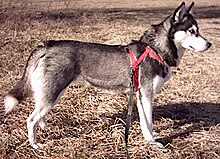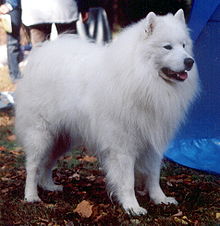
The Samoyed, often referred to as the “smiling Sammie” due to its characteristic upturned mouth, hails from the frosty reaches of Siberia and was historically employed by the Samoyedic people for herding and sled pulling. Distinguished by its plush, radiant white coat, this breed is a true embodiment of grace and endurance under the harshest of climates. Beyond its working origins, the Samoyed stands out for its sociable and affectionate nature, making it a favored family companion. Beneath its gentle, playful demeanor lies a robust constitution and an unwavering loyalty to its human counterparts.
The Samoyed is a member of the AKC Working Group.
Breed Characteristics
| Dog Breed | Samoyed |
| Breed Popularity (AKC) | 53 |
| Country of Origin | Russia |
| Personality | Intelligent, energetic, playful, good-natured |
| Life Expectancy | 12-14 yrs |
| Height | 19-24 in |
| Weight | 35-65 lbs |
| Color | White |
| Coat | Long, double |
| Shedding | Seasonal |
| Grooming | 2-3 Times a Week Brushing |
| Health Problems | Dental problems, eye issues, skin allergies |
| Trainability | Independent |
| Exercise Needs | Energetic |
Samoyed History
Hailing from the cold reaches of Siberia, the Samoyed was named after the nomadic Samoyedic peoples. These dogs were bred for a variety of purposes including herding, hunting, and pulling sleds. Their trademark ‘Sammy smile’ and fluffy white coat have endeared them to people worldwide, but these features also served a practical purpose – the coat insulated them from freezing temperatures, and the upturned mouth corners prevented drooling, which could form ice in severe cold.
Temperament
Samoyeds, with their luminous white coat and signature smile, exude friendliness and adaptability. Their behavior is affectionate and social, making them fantastic family companions. These intelligent dogs have a moderate to high energy level, requiring regular activity to keep them content. Early socialization ensures they remain amiable around other animals and people. While they don’t bark excessively, they do use their voice to communicate or alert.
Remember, while breed traits provide a general idea, individual dogs can have personalities that differ from the breed standard. Always spend time getting to know the dog and ensure their needs and temperament align with your lifestyle.
Grooming Requirements
Samoyeds sport a thick, fluffy double coat that requires frequent brushing, especially during shedding seasons, to manage the dense fur. Bathing them with a suitable dog shampoo helps in detangling and maintaining coat health. Regular grooming tasks like nail trimming, ear checks, and dental care are crucial.
Samoyed Health
Samoyeds live for about 12-14 years and are known for their fluffy white coats. Regular vaccination, flea prevention, and deworming are paramount. They can be prone to certain heart conditions and hip dysplasia. Nutritionally balanced diet using premium dog food and treats is essential. Neutering or spaying is often recommended.
Exercise Needs
Samoyeds, with their friendly disposition, require regular exercise. Walks, playtime in the snow, and fetch games are essential. Visits to the dog park can offer both exercise and socialization. Their thick fur and herding instincts mean they’ll enjoy outdoor activities, especially during cooler weather.
Training
Samoyeds, with their radiant white coat and ‘Sammy smile’, respond well to patient obedience training. Through structured commands, potty training becomes hassle-free, while crate training provides a calming environment. Behavior problems are rare, but early detection and intervention are crucial. Ensuring regular socialization helps in retaining their friendly and sociable nature.
Samoyed Pictures
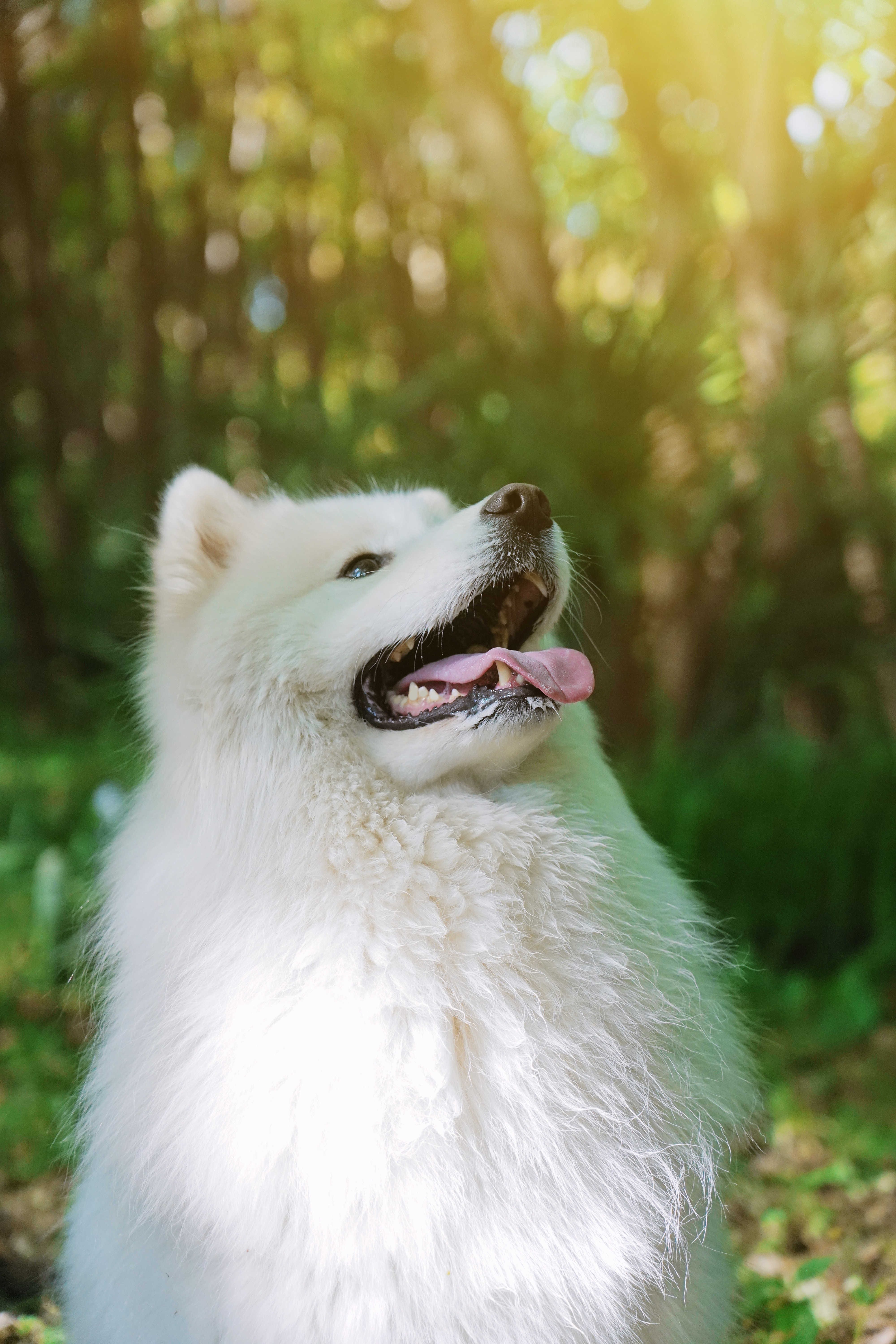
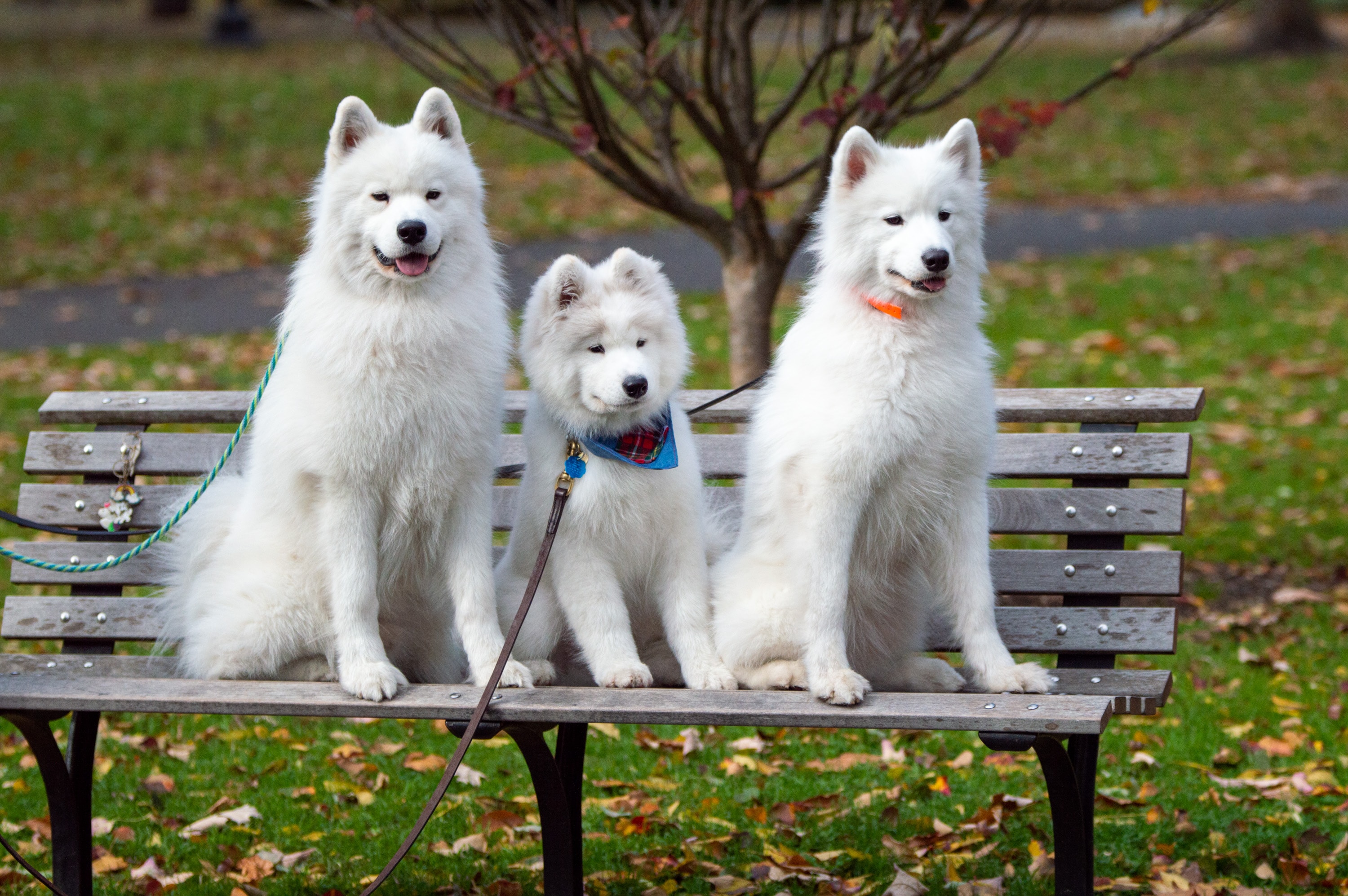
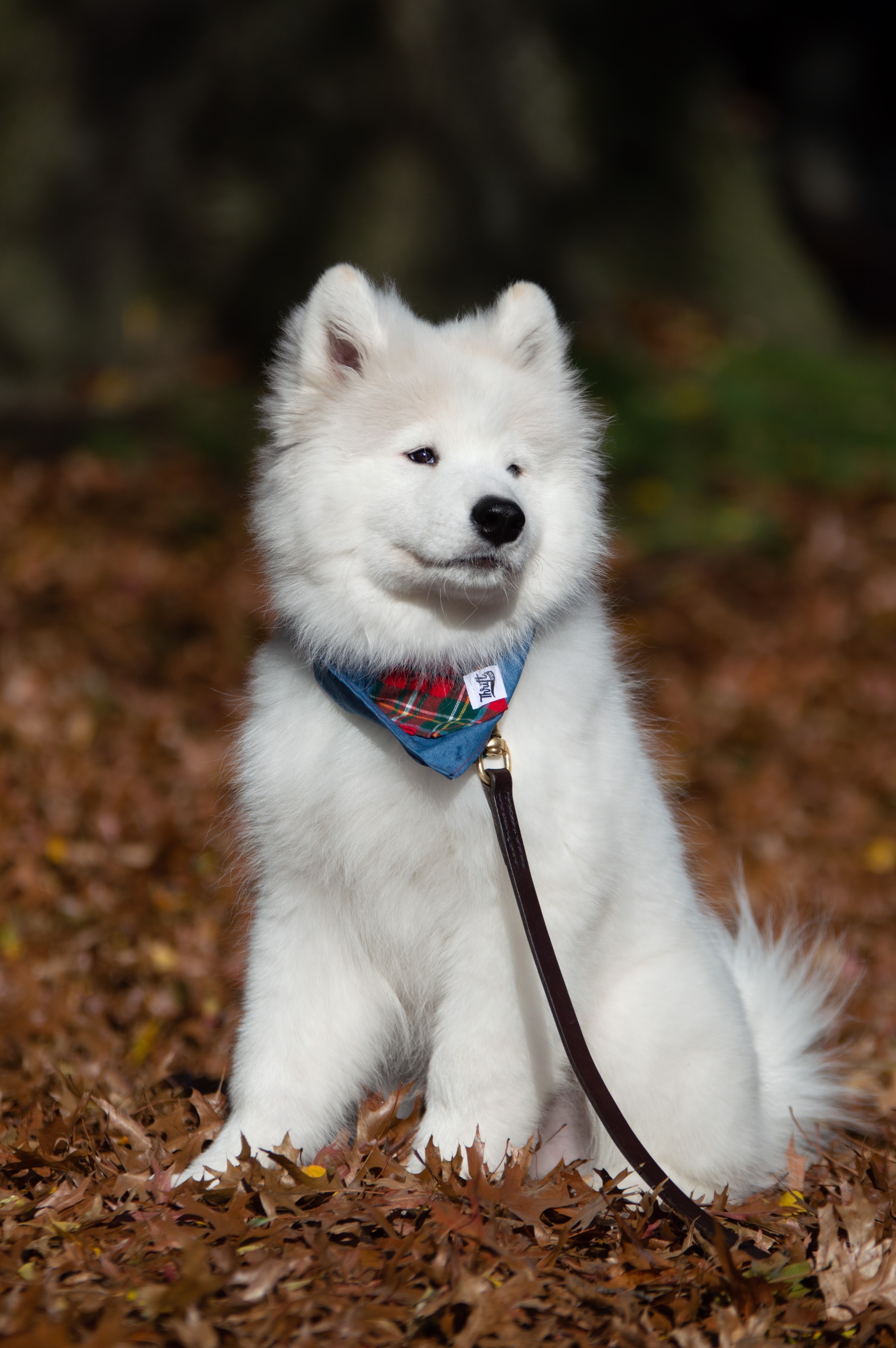
Related Dog Breeds
More Dog Resources
Are you thinking about getting a puppy? Make sure to check out our list of important questions to ask before you adopt a puppy.
We also have many resources to help, from naming your puppy to socialization resources and training tips.
Take me back to the Ultimate Guide to Dog Breeds

